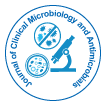

Patricia Branco
Bio deterioration of cultural heritage (CH) materials (e.g., paper, marble, lime, mortar, parchment, metal, glass) was neglected for a long time since it was previously believed that it was only due to chemical and physical processes. However, over the last decades, it has been proven that the action of microorganisms is a critical factor in the deterioration process. Biodeteriogenic microorganisms cause serious aesthetical and structural damages in CH materials of inestimable value. Some of them can synthesize carotenoid compounds causing pink staining such as Rhodotorula sp., this yeast has been associated with the deteriorative effects observed in the Évora Cathedral, Portugal. To distinguish Rhodotorula sp., from other microorganisms that produce the same type of alterations on CH materials, proper identification methods must be applied. RNA-fluorescence and in situ hybridization (RNA-FISH) has the potential to specifically identify the target microorganism of interest in complex microbial communities (it is based on hybridization of fluorescently-labeled oligonucleotide probes targeting to specific regions of the ribosomal RNA). Thus, the aim of this study was to design a novel genus specific RNA-FISH probe against Rhodotorula sp., and to evaluate its specificity and performance both in silico and experimentally. This will contribute for facilitating Rhodotorula sp., identification in degraded CH materials by RNA-FISH. A novel probe for Rhodotorula sp., (L-S-Rh160-a-A-19-ATTO 647N, Rh160-ATTO 647N) was designed using decipher program. Its specificity was analysed in silico by nucleotide BLAST and its performance in terms of characteristics of the probe e.g., GC content and temperature of hairpin structures by oligonucleotide properties calculator oligocalc and hybridization efficiency by math FISH program. The experimental performance and specificity were evaluated by constructing the fluorescence-signal-response/formamide concentration curve for the target and non-target yeast (Cryptococcus adeliensis) and by testing the probe against several other non-target CH biodeteriogenic microorganisms. To do this, a previously described RNA-FISH procedure was applied and the results were analysed by flow cytometry (FC) and by epifluorescence microscopy (EM). In silico analyses of Rh160-ATTO 647N indicated that this probe has a high coverage and specificity for the target genus (796 matches of the target organism in 1000 sequences and only one match for organisms from the same ecosystem of the target organism, Cryptococcus sp.,); fulfills the criteria for being an RNA-FISH probe e.g., 52.60% of GC content and temperature of hairpin structures below hybridization temperature and shows a high maximal theoretical hybridization efficiency with Rhodotorula sp., (99.92% with 0% of formamide). The experimental results were in agreement with these in silico analyses revealing that Rh160-ATTO 647 N probe has a high specificity and performance without formamide. Maximal strong and intense fluorescence signals were detected by FC for the target and absence of signal for all the non-target microorganisms tested. Therefore, this study contributes to an easy and fast identification of Rhodotorula sp., yeast involved in the CH bio deterioration process by RNA-FISH. This will be advantageous for CH safeguard.